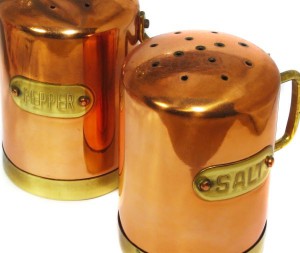Finding Hidden Sodium in Foods
 Do you like the flavor of salt? Do you keep a salt shaker on your dinner table?
Do you like the flavor of salt? Do you keep a salt shaker on your dinner table?
Chances are you’re consuming too much sodium – even if you’re not using a salt shaker.
Federal researchers recently discovered that nearly everyone who should reduce their sodium intake to 1,500 mg consumes much more than that. Additionally, 90 percent of Americans who should limit their intake to less than 2,300 mg of sodium failed, according to a new study from the Centers for Disease Control and Prevention.
Where is all the sodium coming from, if it’s not from the shaker?
Researchers say it’s in frozen foods, canned foods, store bought meals and restaurant entrees.
If you want to lower the amount of sodium in your diet, try these helpful tips from the American Heart Association:
- Avoid eating processed, prepared and pre-packaged foods.
- Choose low-sodium versions of food.
- Read labels.
- Eat fruits and vegetables.
- Choose unsalted nuts, seeds, dried beans, peas and lentils.
- Use unsalted or low-sodium soups and broths.
- Never add salt to cooking.
- Use spices instead of salt.
- Do not keep the salt shaker on your dinner table.
- Avoid eating salted potato chips, lunch meats, hot dogs, salted pork, ham hocks, dill pickles and canned foods.
Remember these measurements when you cook with salt:
- 1/4 teaspoon salt = 600 mg sodium
- 1/2 teaspoon salt = 1,200 mg sodium
- 3/4 teaspoon salt = 1,800 mg sodium
- 1 teaspoon salt = 2,300 mg sodium
Sources: Centers for Disease Control and Prevention; American Heart Association
+ Learn about Nutritional Analysis
+ Read about Weight Loss Programs
